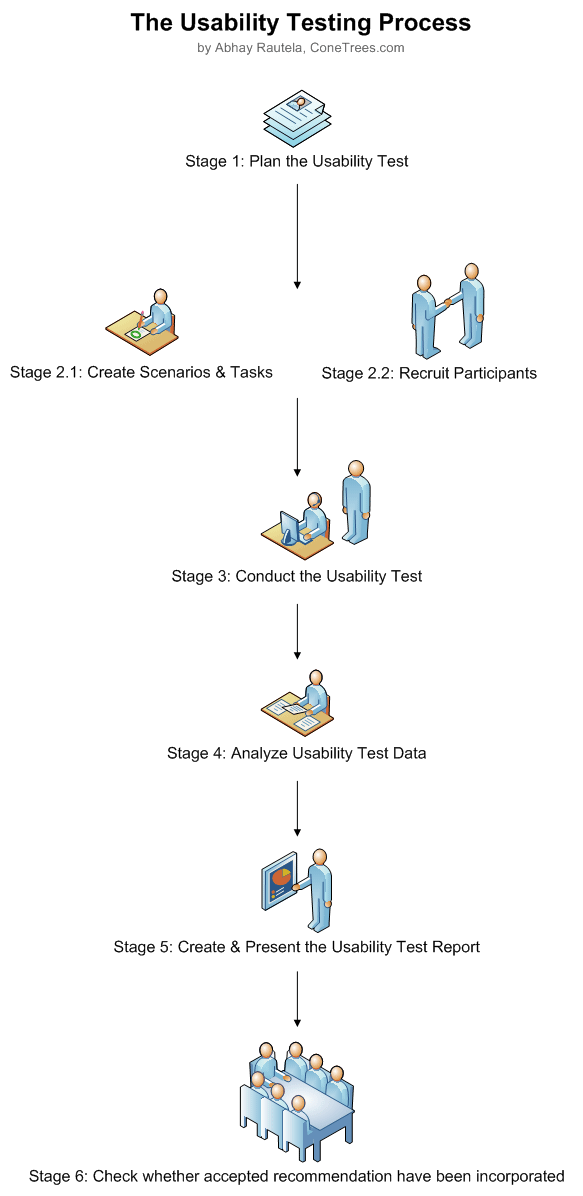
Russian translation of the article (by Dmitry Satin).
Chinese translation of the diagram and article (by Ryana).
Usability Testing Process Poster (A4 PDF) (6399 downloads )
A usability test consists of the following steps:
1- Usability test planning
2.1- Participant Recruitment
2.2 Scenario & Task creation
3- Execute the usability test/ conduct usability test sessions
4- Data Analysis
5- Reporting
6- Usability test recommendation incorporation checkpoint
I will follow up with another post to explain the steps in detail, but for now, here is some detail on step 6. This is an important step in organizations where usability is not well integrated into the software development lifecycle. Step 6 is not mentioned in most generic usability testing processes, but I want to stress upon it since it is plays a good role in optimizing the usability test process.
After you report the usability test findings and recommendations, stakeholders will agree to incorporate a certain number of recommendations. After the period for incorporating usability test recommendations has passed, you should hold a checkpoint meeting for the following purpose:
- To see how many of those suggestions agreed upon have actually been incorporated. There is no point of conducting usability test after test if recommendations (that everyone agrees will improve the usability of the product tested) are not incorporated. You don’t want to keep conducting usability tests where you come out with recommendations, stakeholders agree on incorporating some, and then everybody forgets about it. And in the next test, you come out with many of them same old ones— this is simply not a very optimal way of doing things. This checkpoint thus helps you mitigate what I think is a concern worth addressing.
- Using data, conclude whether those suggestions did or did not improved the usability of your product (or the portion/ section you tested upon), recommendation by recommendation. In case they did, you may want to find out if there is any further scope of improvement. And in case they did not, you may want to understand what wrong assumptions were made while giving particular recommendations and learn from them so you can avoid them in similar cases in the future.


Leave a Reply